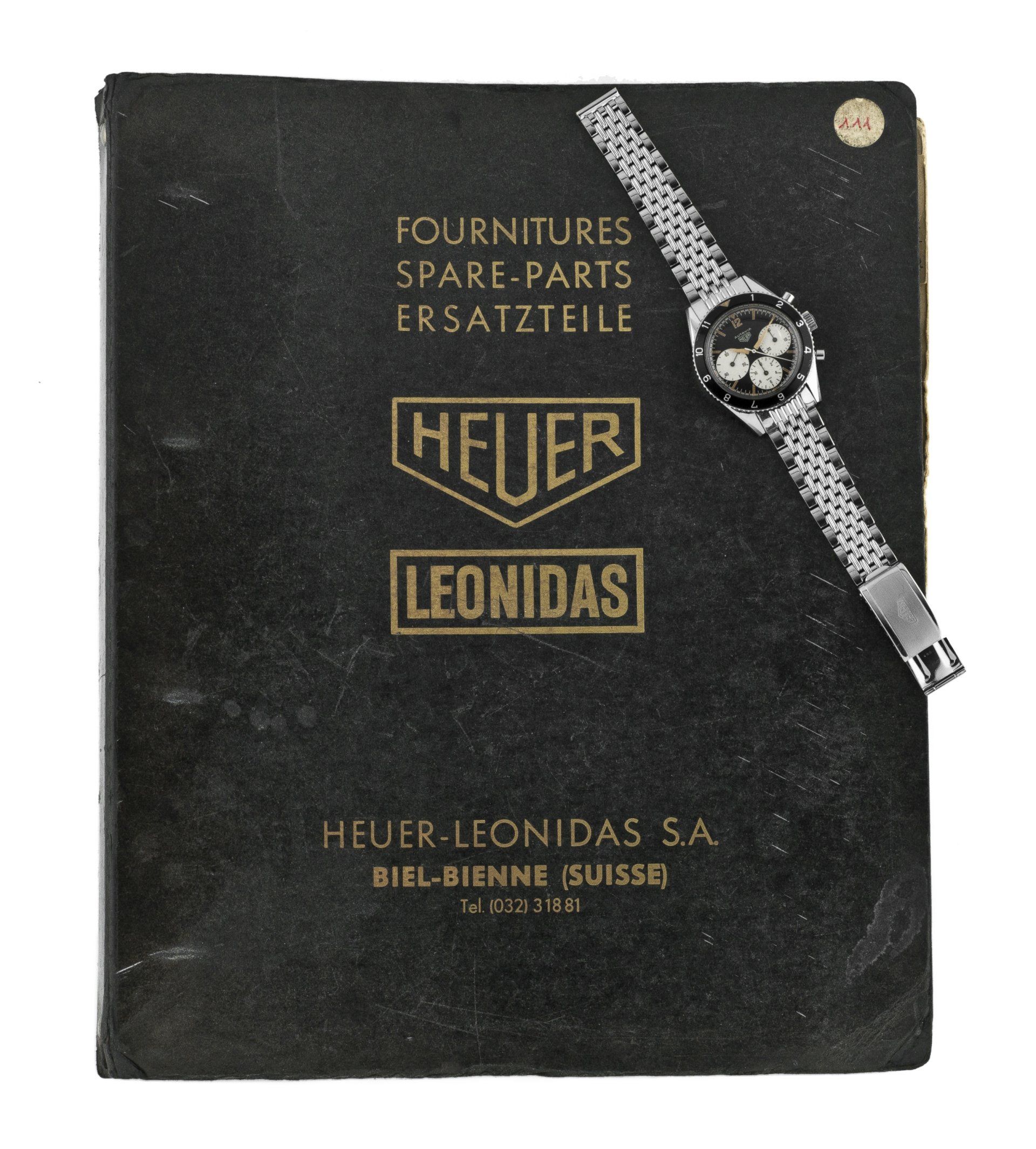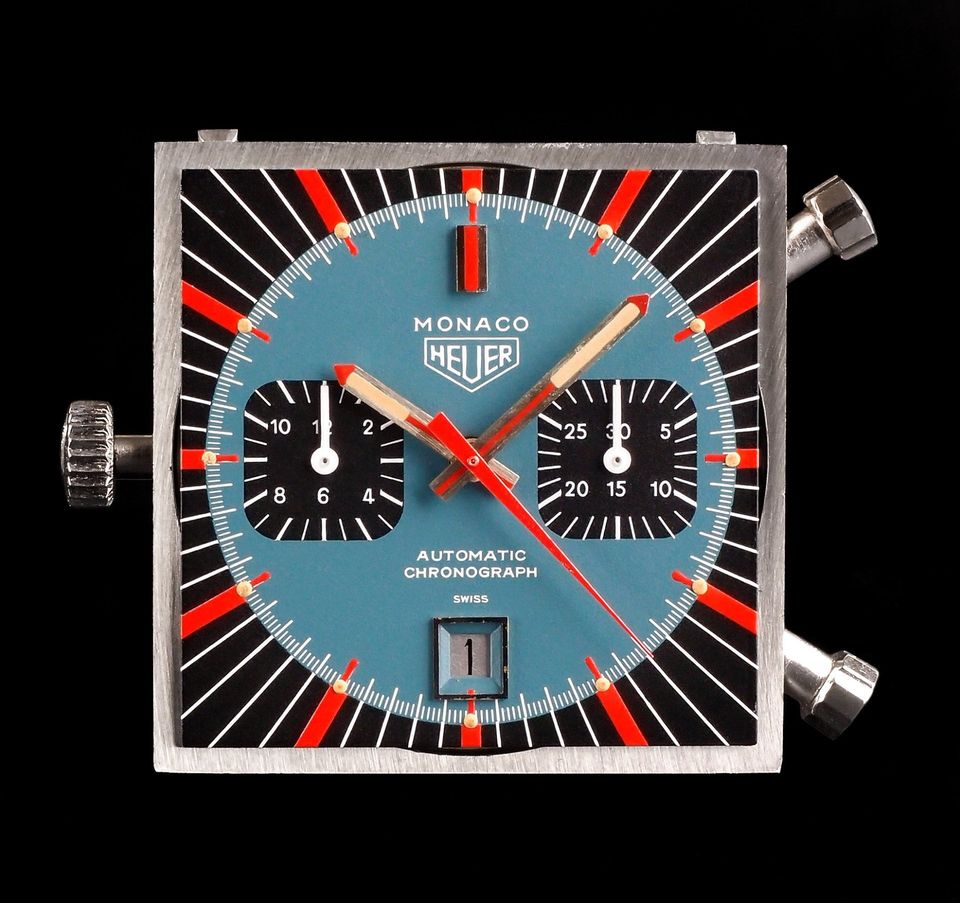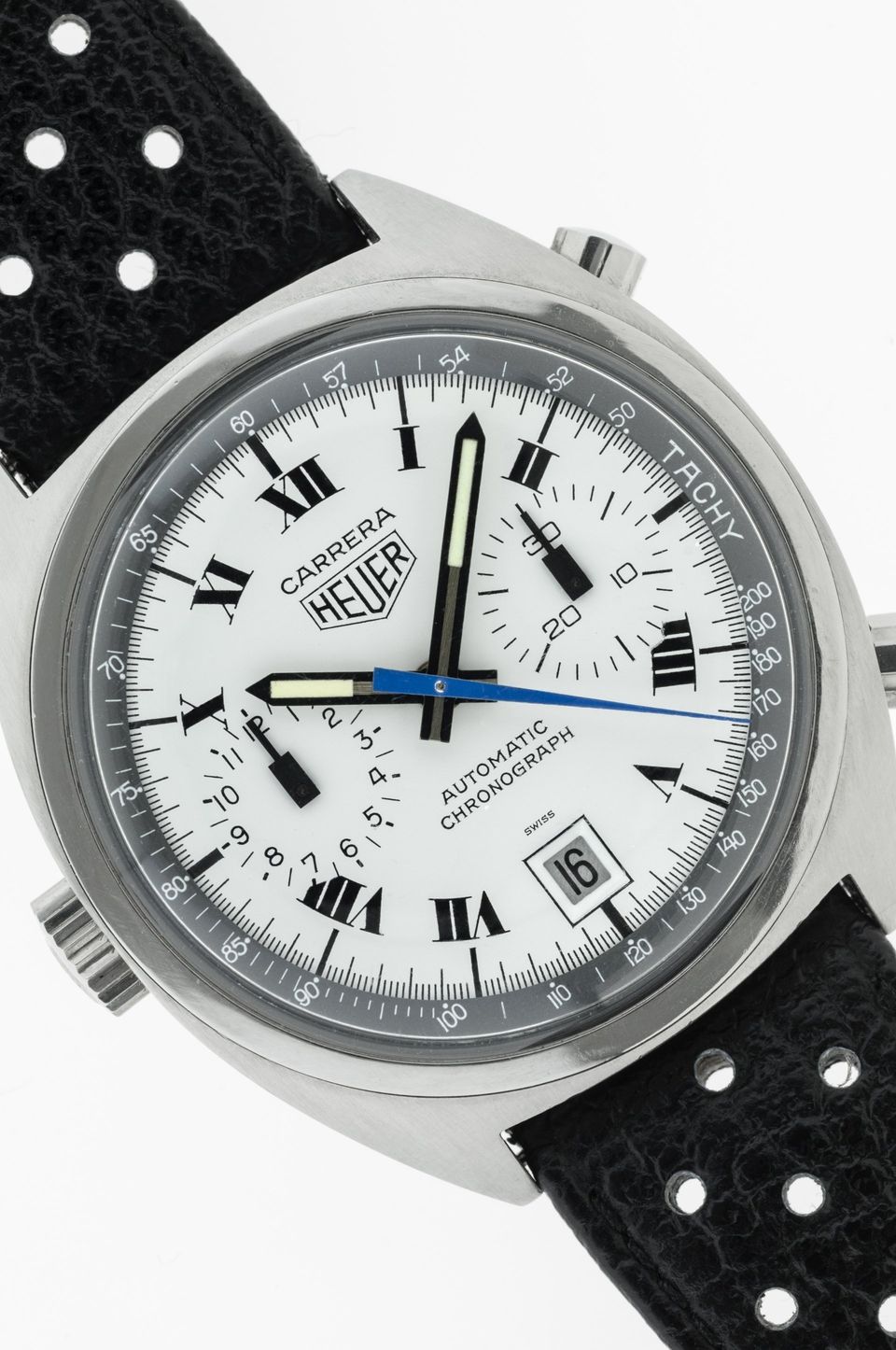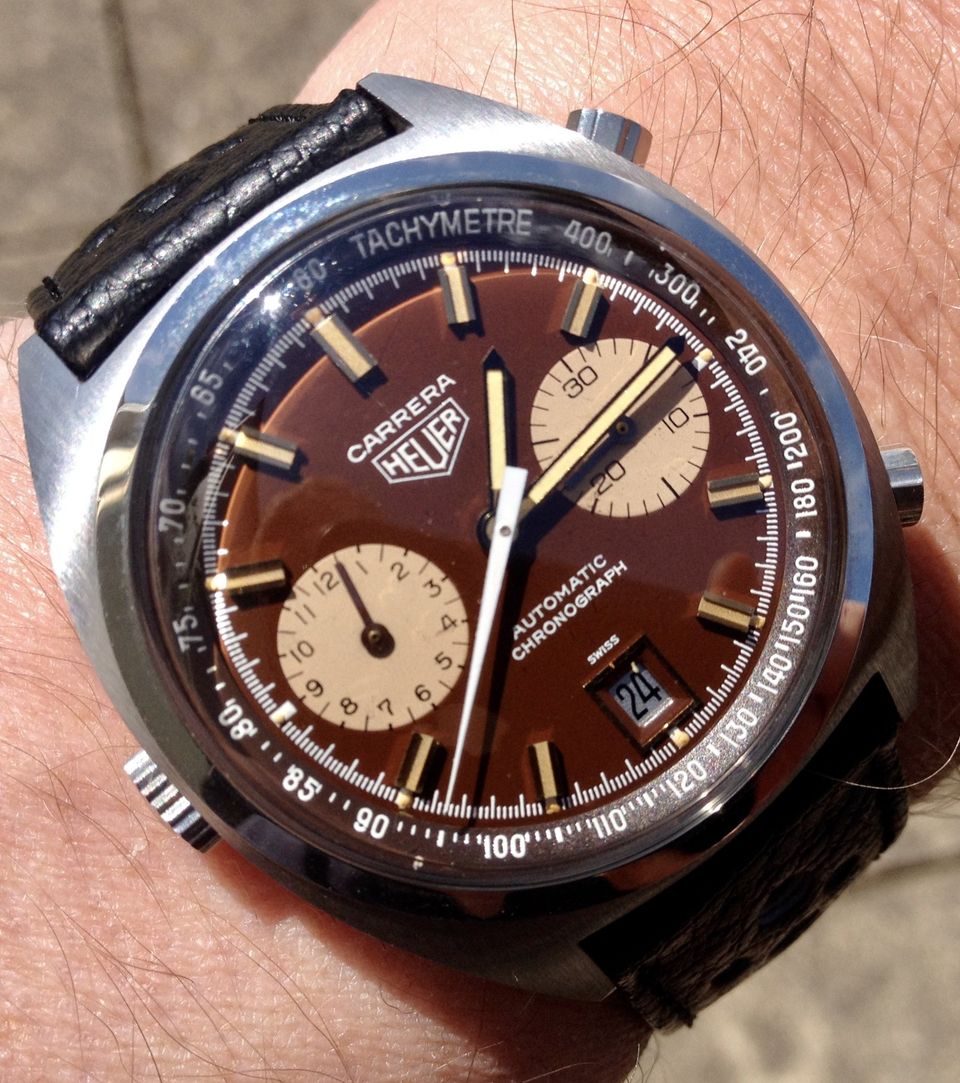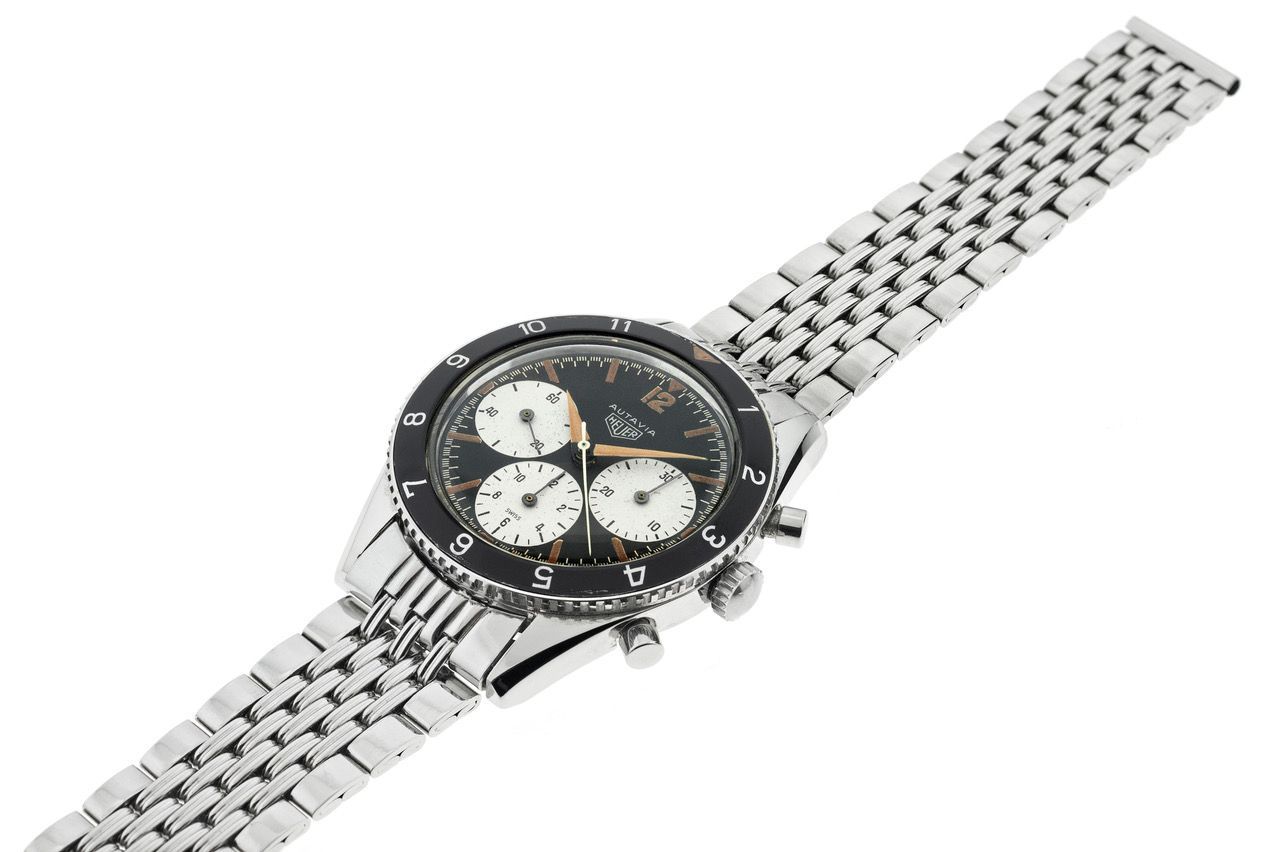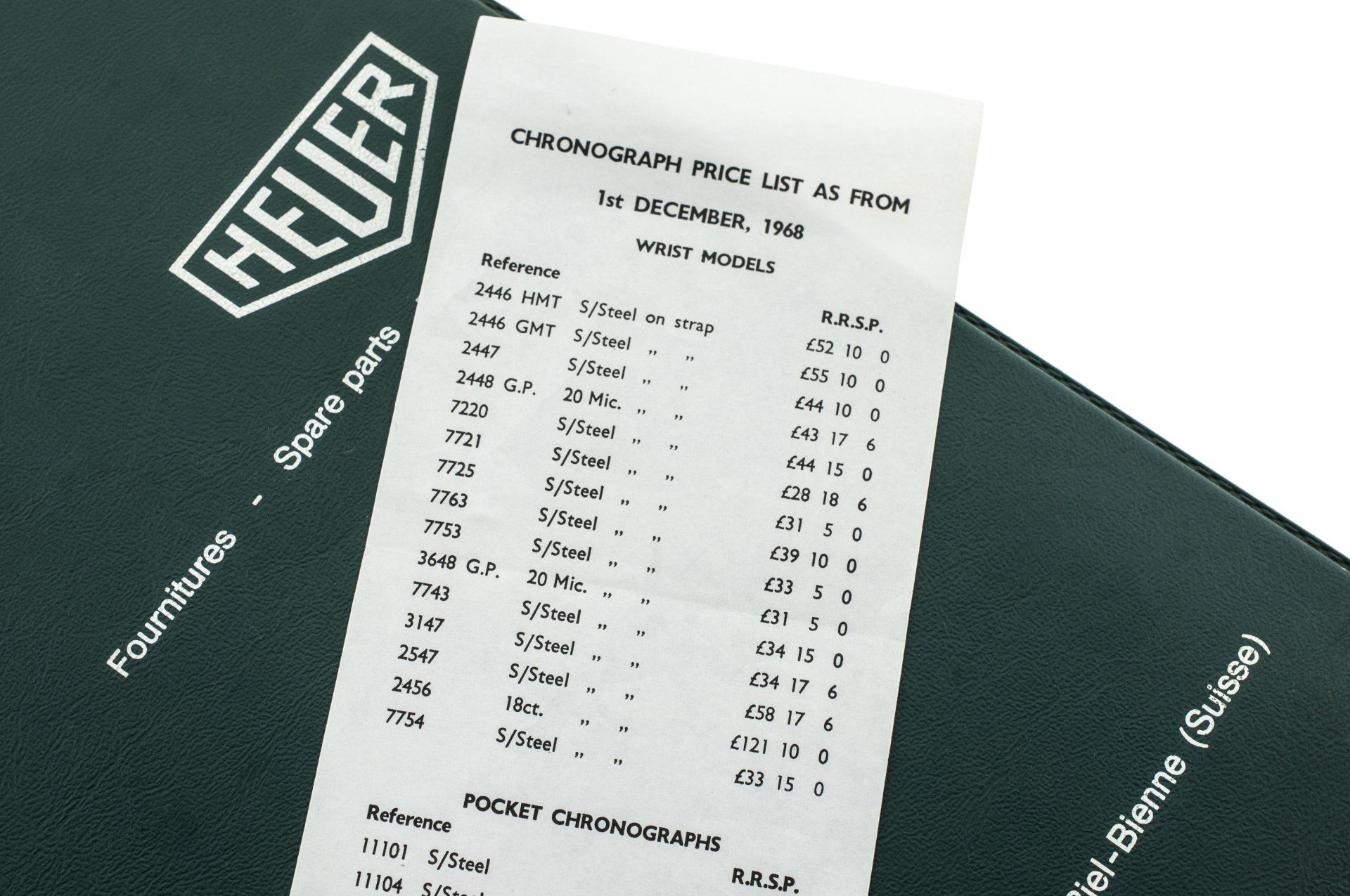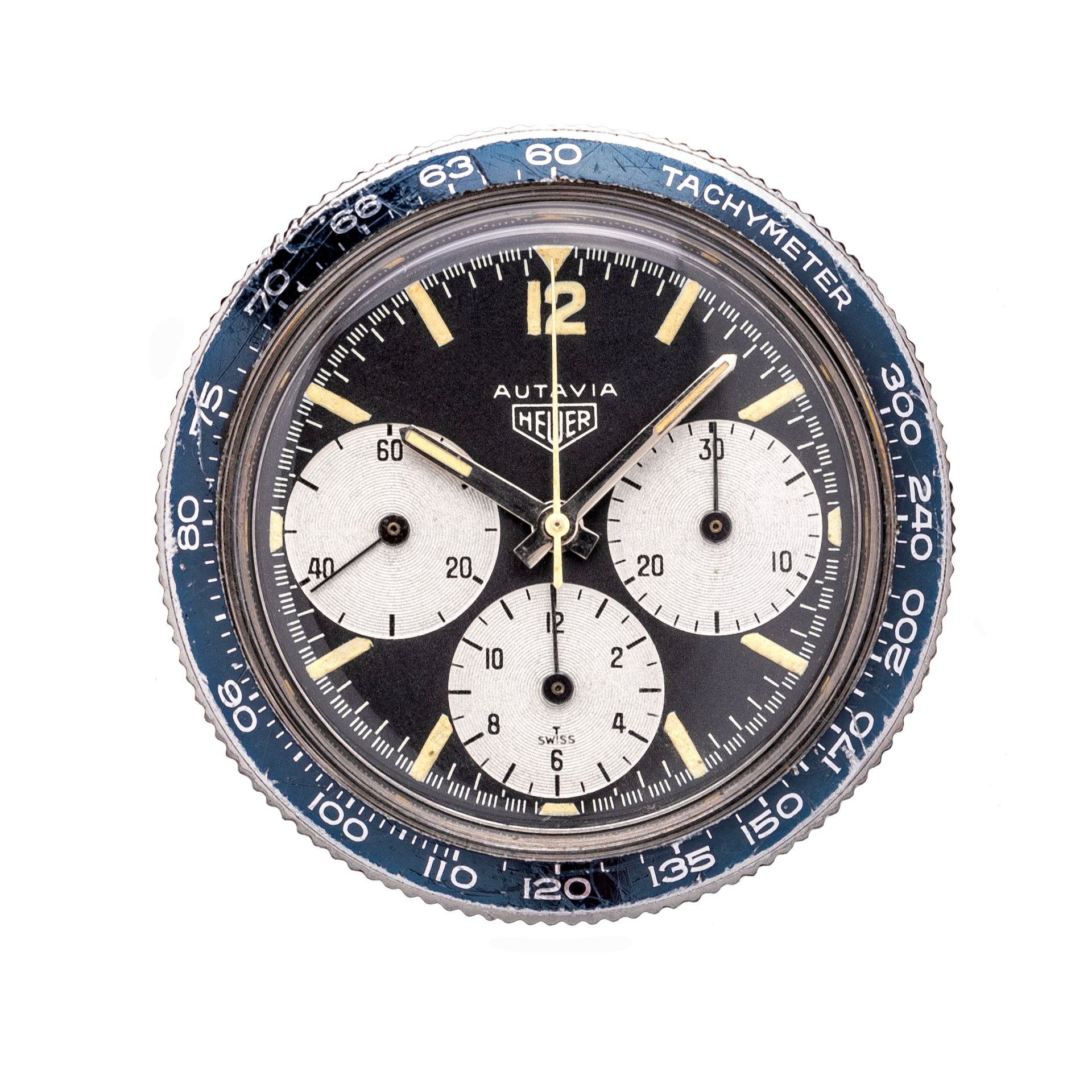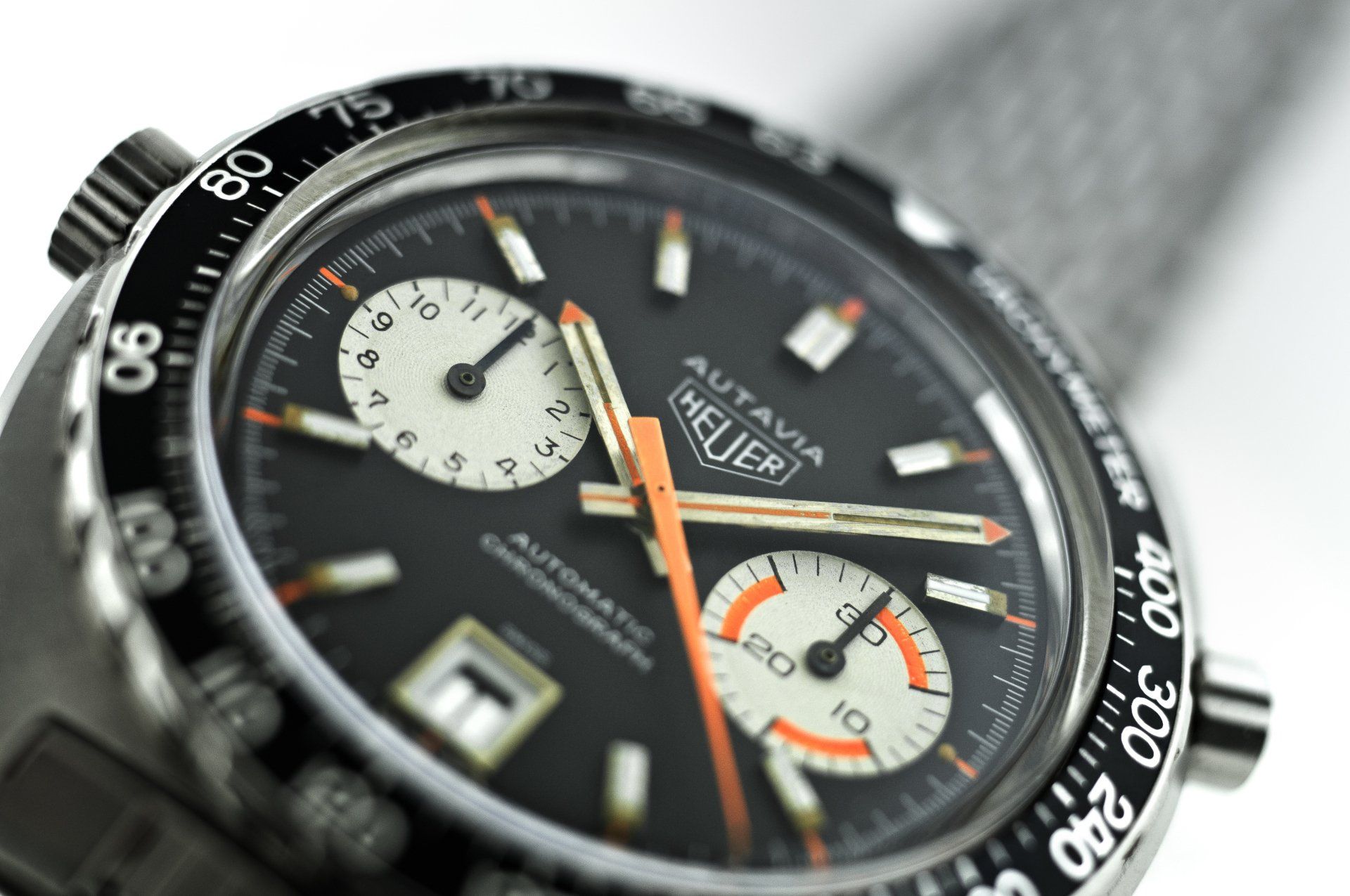Vintage Heuer Test Dials...
So what exactly is a "test" or "prototype" dial?
I am not entirely sure if it happens in exactly the same way in these days of in-house design but, back in the day, watchmakers such as Heuer were very reliant on the makers of their parts to come up with designs. Whether that was a new case style from Piquerez to allow a new square waterproof watch (the Monaco) or a dial design from Singer that would sit inside the new automatic chronographs in 1969.
These ateliers were very active within Switzerland and their salesmen would often be found doing the rounds with their wares. When a specific design request came in, a dial maker such as Singer would produce a variety of design options for each planned model, to see which struck a chord with the brand in question. During the late 1970s, due to the poor market conditions, Heuer was very keen to try all sorts of variations of movements and dial designs to try and find a winner and it is from this period that we see most test dials today. The Singer salesperson would present a variety of options and, after several department meetings, some would be selected by Heuer and some would not. It is interesting to note that although you see clear separation when it comes to the case designs for brands, you will sometimes see dial designs that Singer made for Rolex, UG, Heuer etc that share similar ideas, although this always stops short of replication as the brands all sought their own identity.
A test dial is just that - a dial that was offered for consideration but ultimately was not put into production. The story goes that these dials would remain in the watch department and some would filter back into individual watchmakers' boxes and be made into watches in the 1970s for their own amusement, while some remained as loose novelties until they were uncovered in the recent past and then made into a watch. It is hard to be precise about numbers, but it was usual for a handful of dials to be made and, if a dial design made it further down the line towards production, there may have been a few more made so that a variety of people could give their feedback. Most test dials (if not all) that are seen today are loose dials added to watches within the last 20 or so years and below are a selection of pictures of some original test dials for the Autavia 1163, Carrera 1153 and Monaco 1133.
Of course, there are some dials that are claimed to be test dials that are in fact just original dials repainted/restored due to prior dial damage. Fortunately, these are very easy to spot. The giveaway on dials is always the quality of the paint work and, most important of all, the precise style of the text printing. Singer, for example, had a very consistent script style for their Heuer printing and the same cliches that were used to print a production dial were also used to print the test dials. As the same equipment was used, you will see consistency for the "Automatic Chronograph" text and the sub register numerals for example. There may be some small areas of the dial that would not pass muster on a production run, because they were never intended to reach customers. Of course provenance is always the first step, with all of the ones pictured here, one way or another being from an ex Heuer 1970s watchmaker source based in Switzerland.
How do you value such items? Well, this is an interesting topic. Ultimately, the value for these dials differs massively depending on the brand and the beauty of the dial. For instance, a Rolex Daytona 6239 Paul Newman "Yacht Master" test dial would be worth a huge amount mounted into a correct period Daytona - certainly a massive premium over a standard Paul Newman! I would also wager that a test dial Omega Speedmaster would be something that many top collectors, and even Omega themselves, would compete to buy. However, sometimes there can be a perception that test dials are somehow dirty words, which perhaps says more about some parts of the collecting community and the fact the Heuer market remains under developed in comparison to the highly organised Rolex and Omega markets, than anything else! Personally I view them as something very cool and special and my take is that they should always be worth a healthy premium over the standard production models, with a further uplift depending on how successful the dial design is, because the overall success of a design is a key driver of watch values.
Whatever your opinion on these test dials, if they are original (as the Singer examples pictured below are), they represent a very interesting and important piece of Heuer history and give collectors a chance to own something that is seldom seen.
Click the link below to preview and/or buy one of the four Heuer collector reference watch books on the Autavia, Carrera and Monaco models or the "Best Of" Heuer holy grail book "Superstars".
Note:
Please do not reproduce these images without permission.
